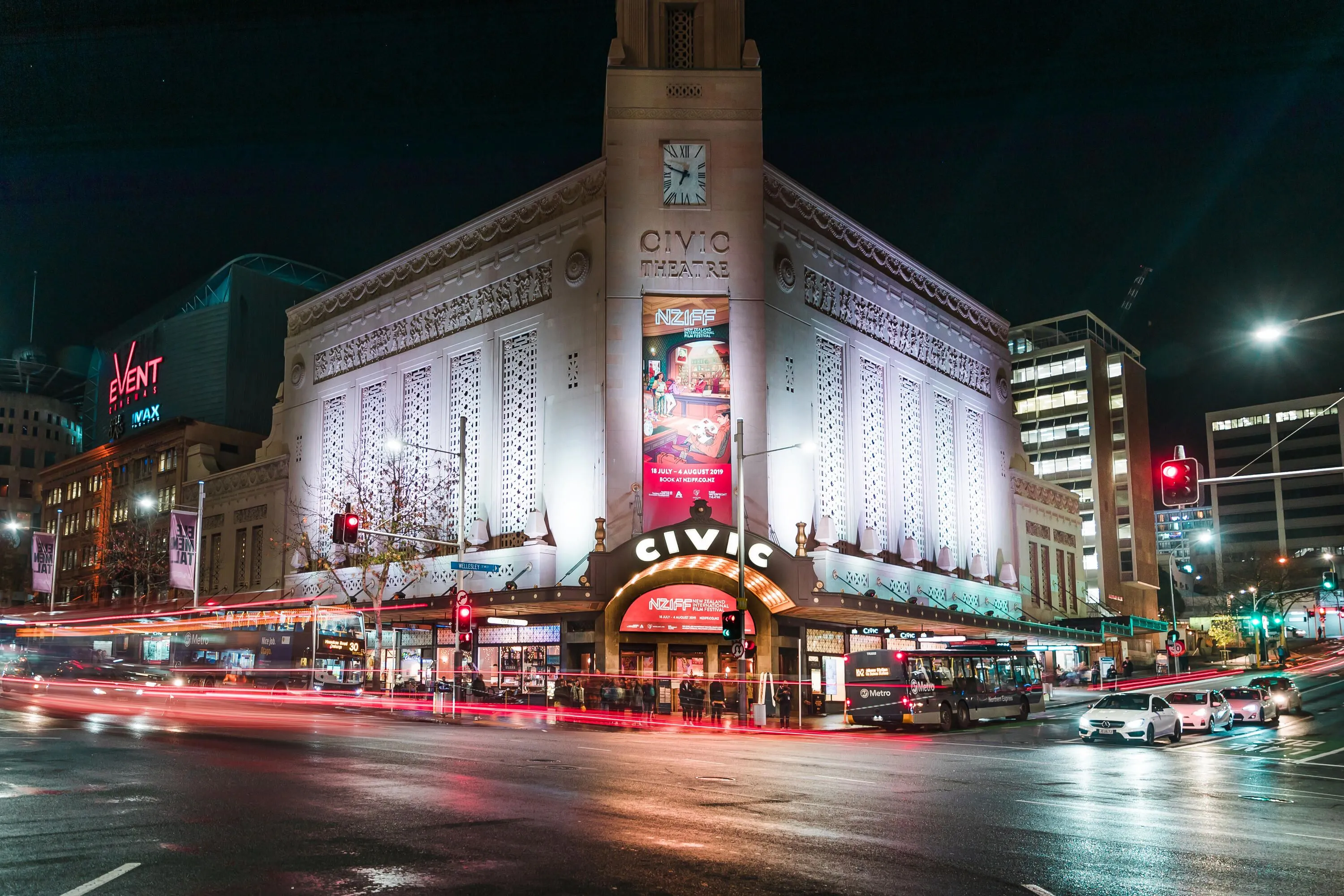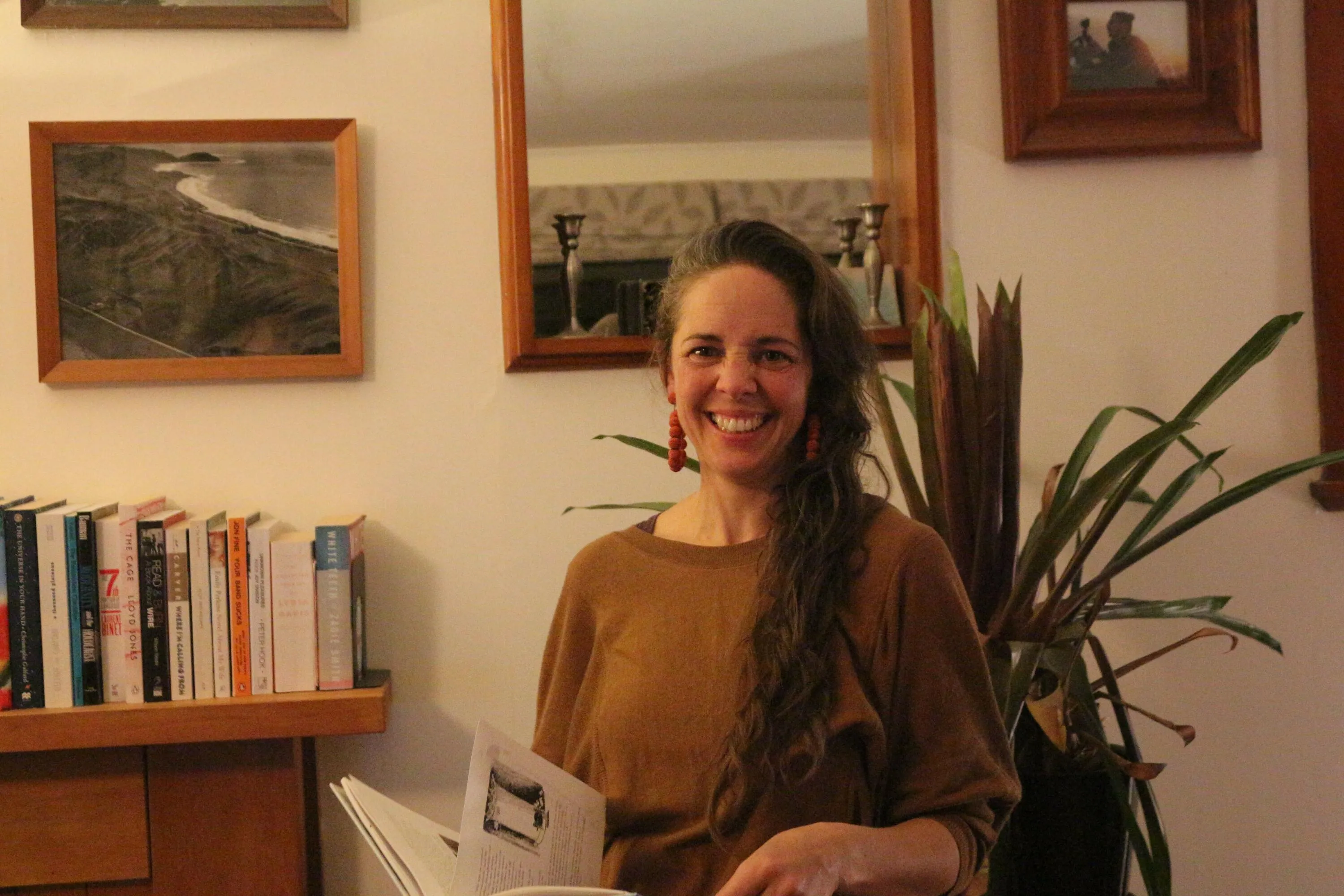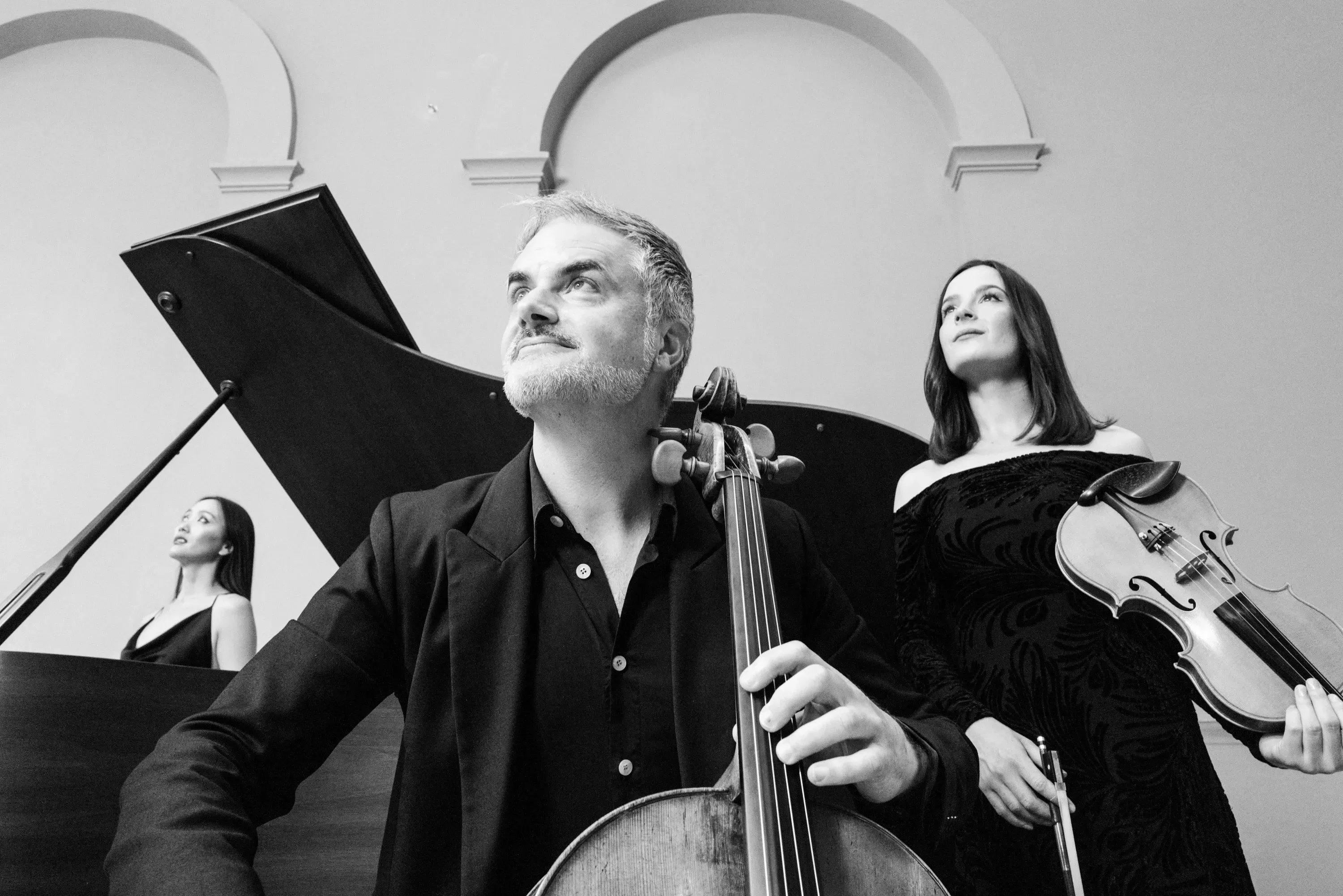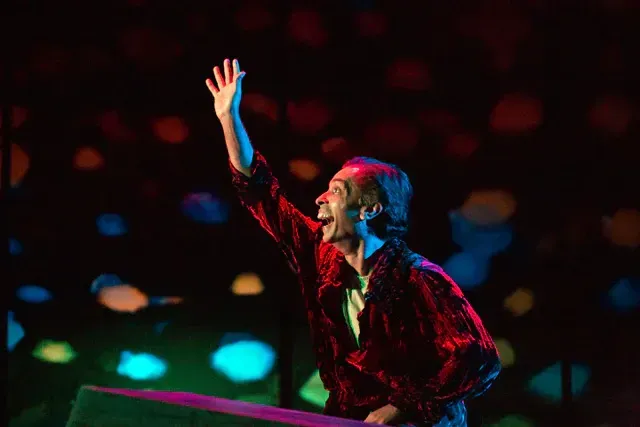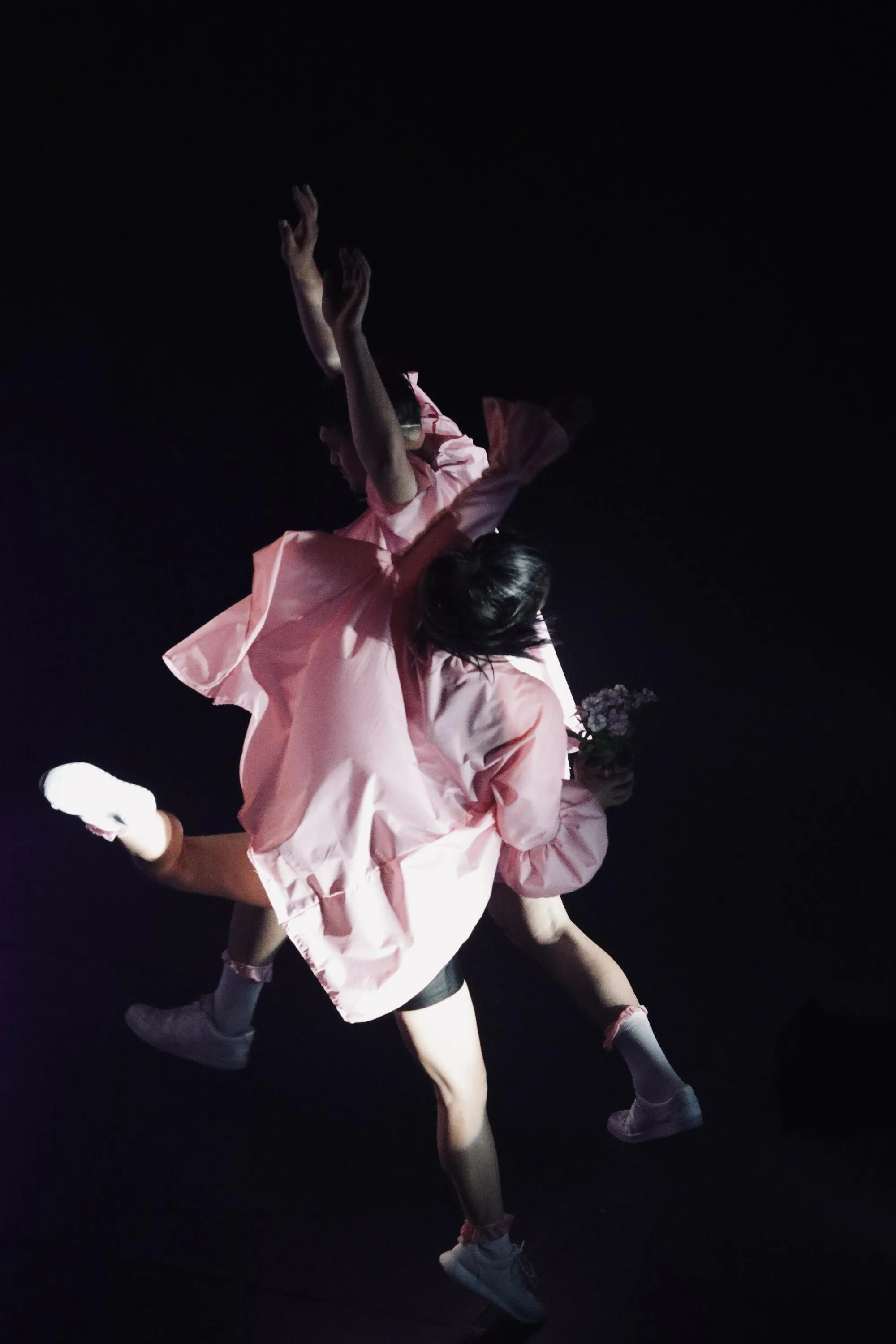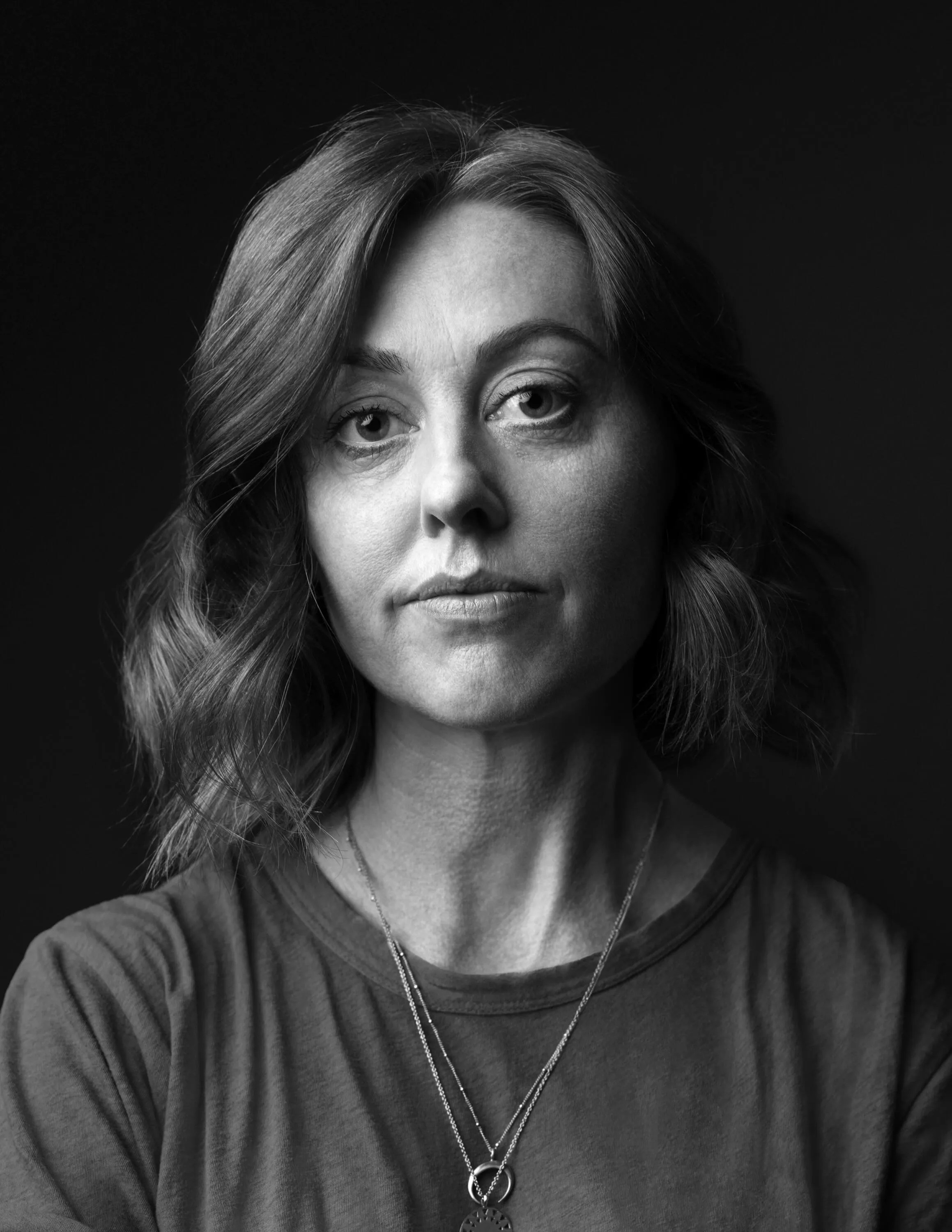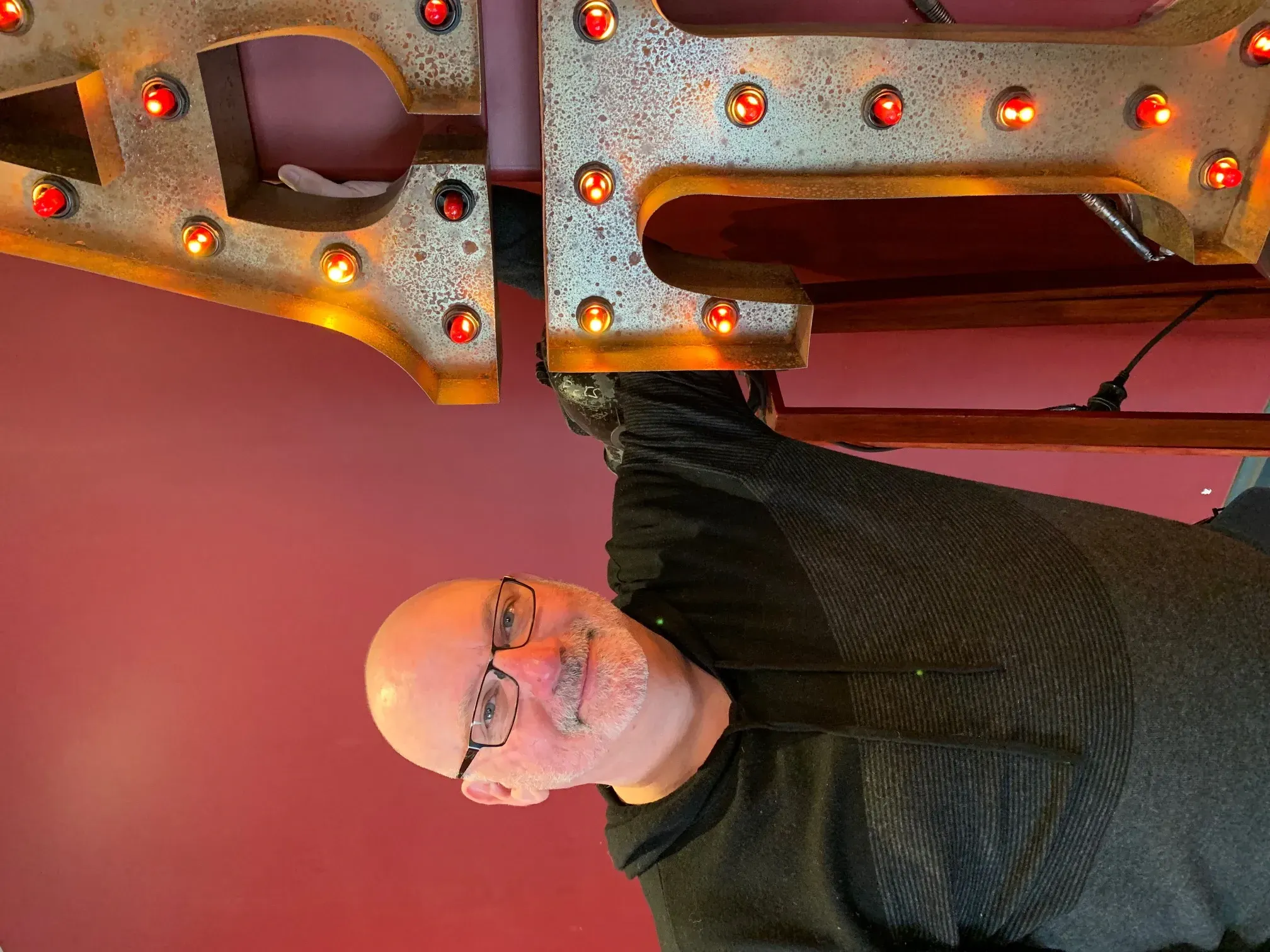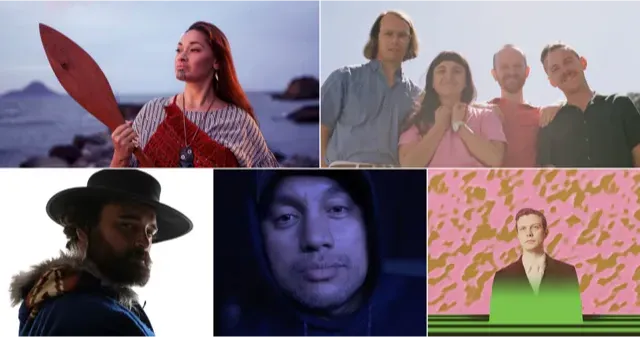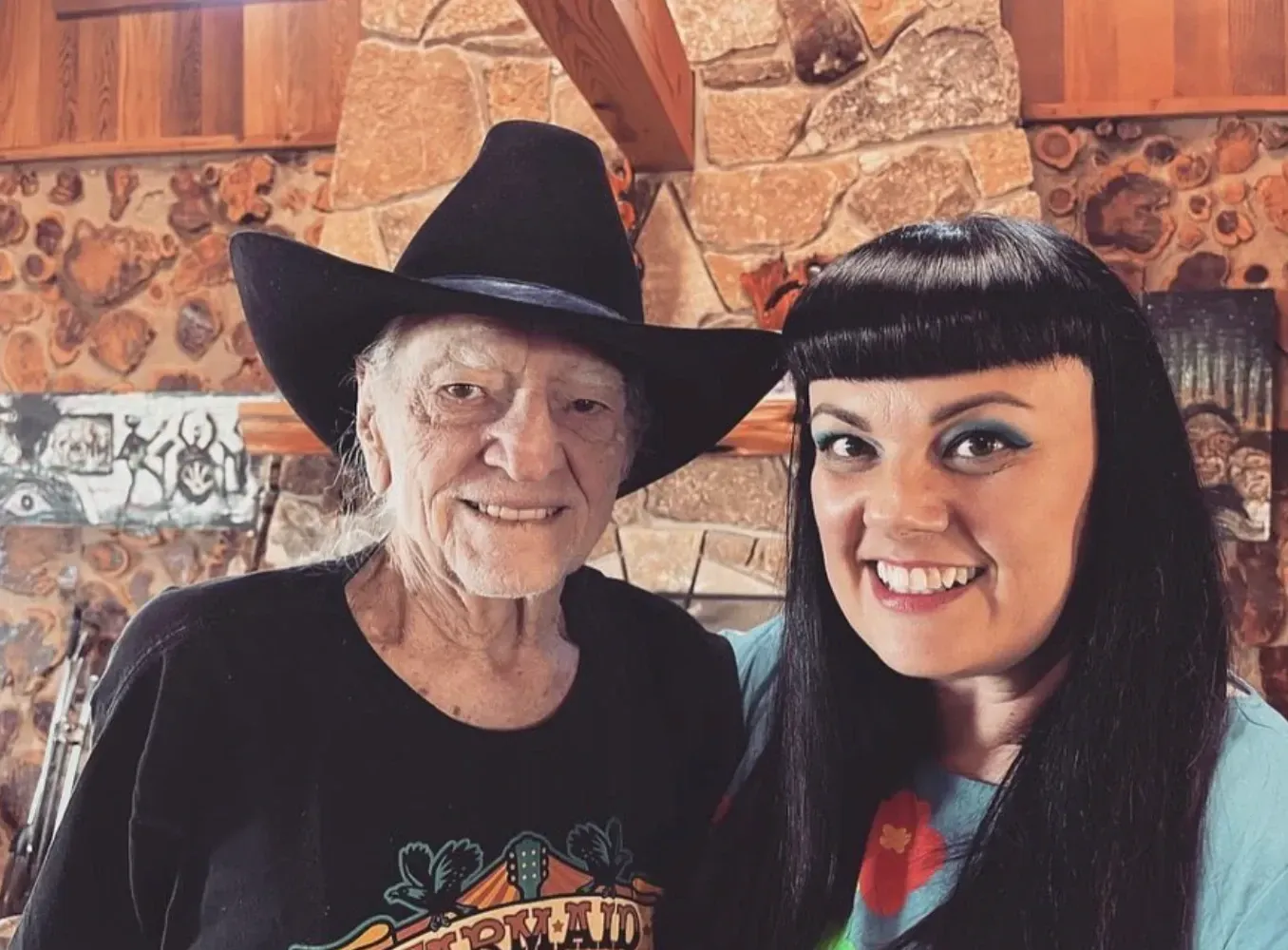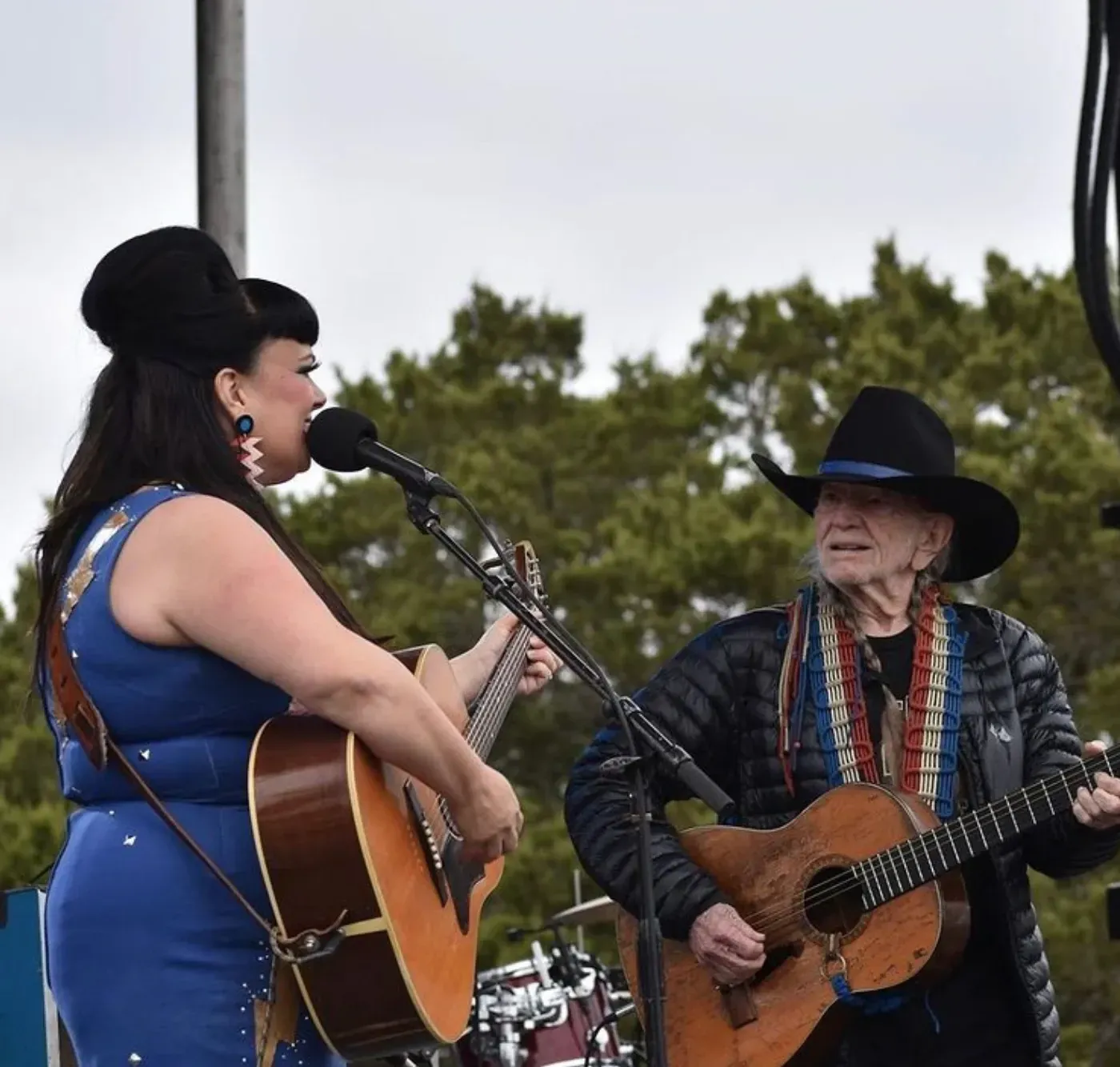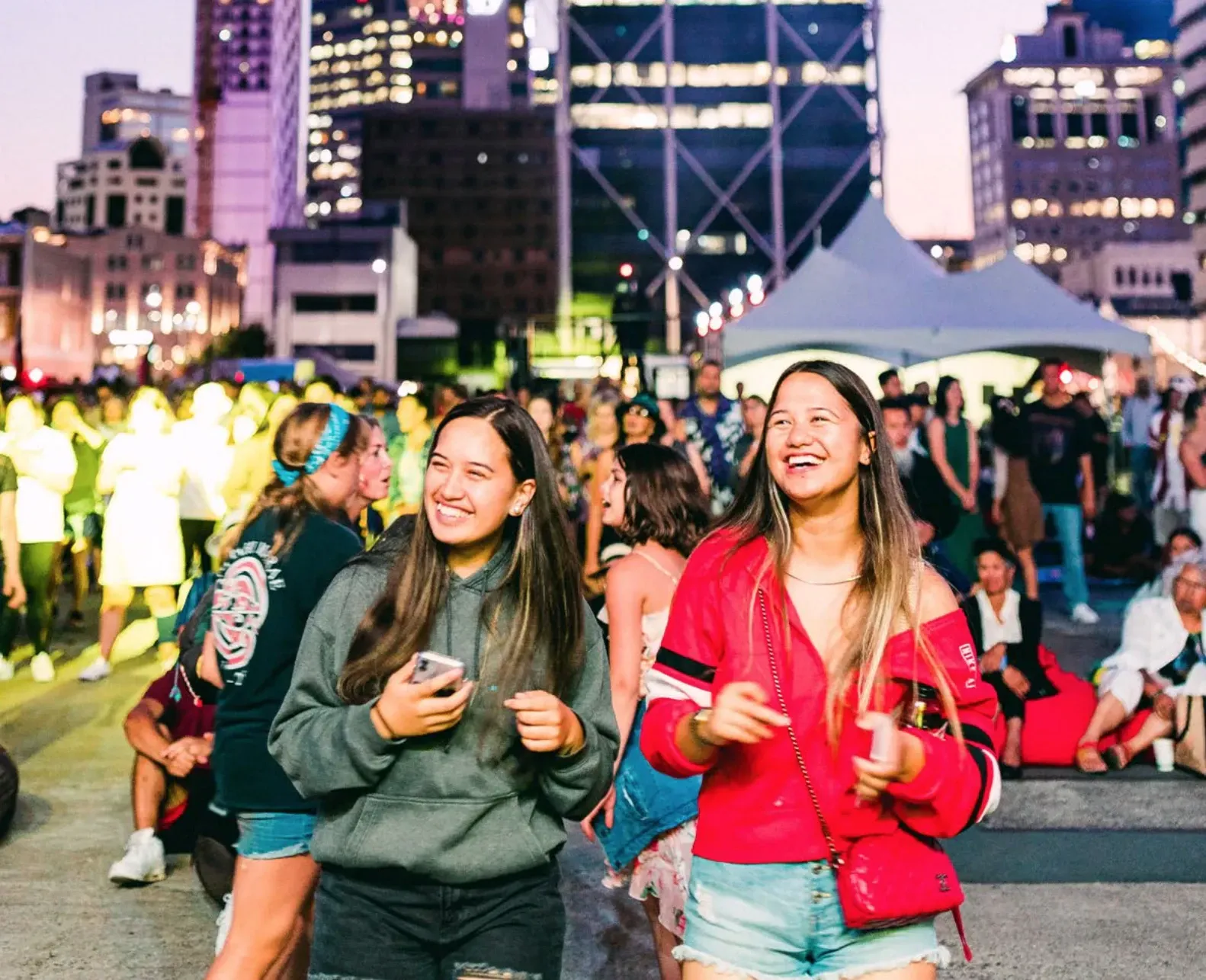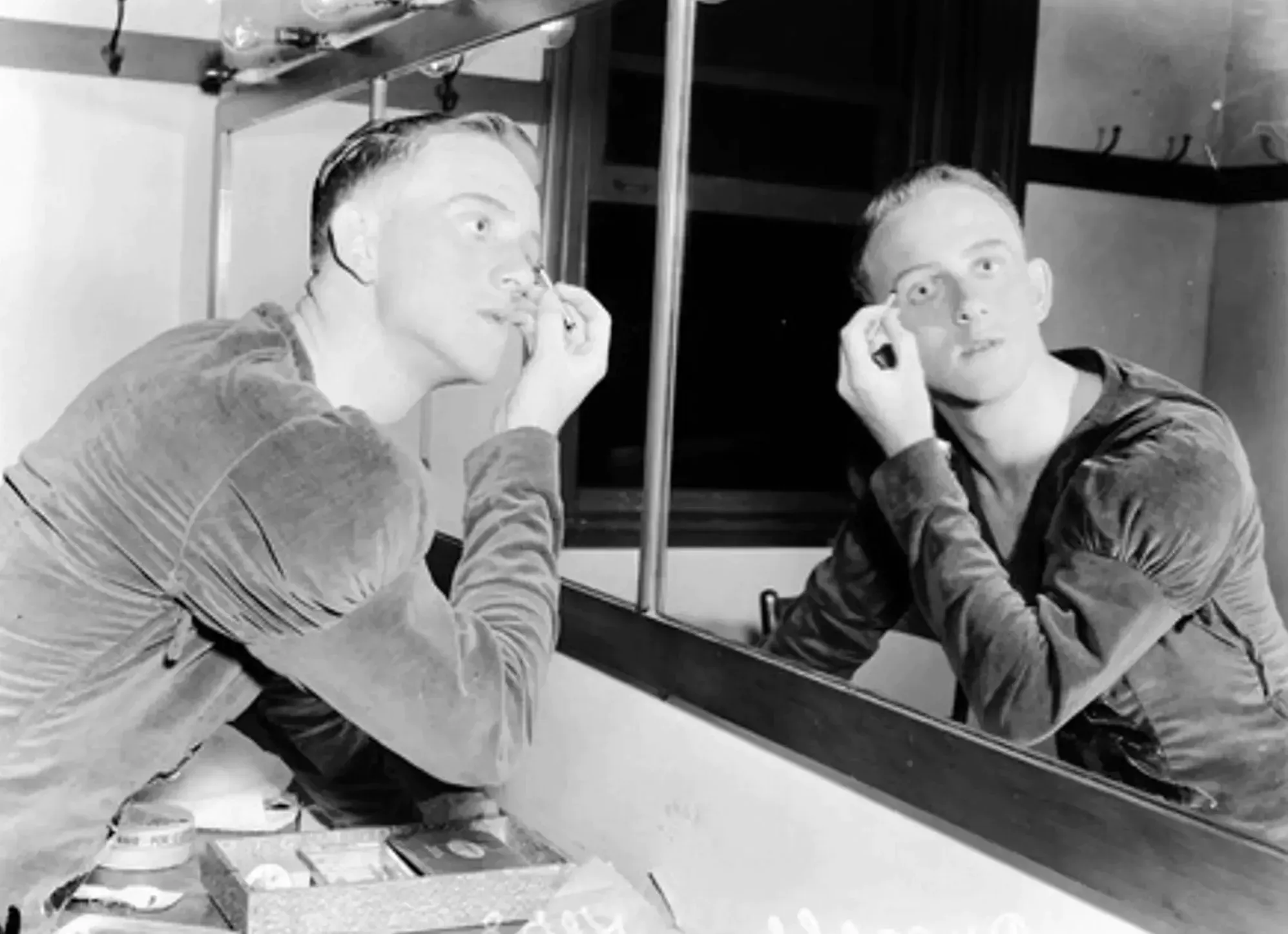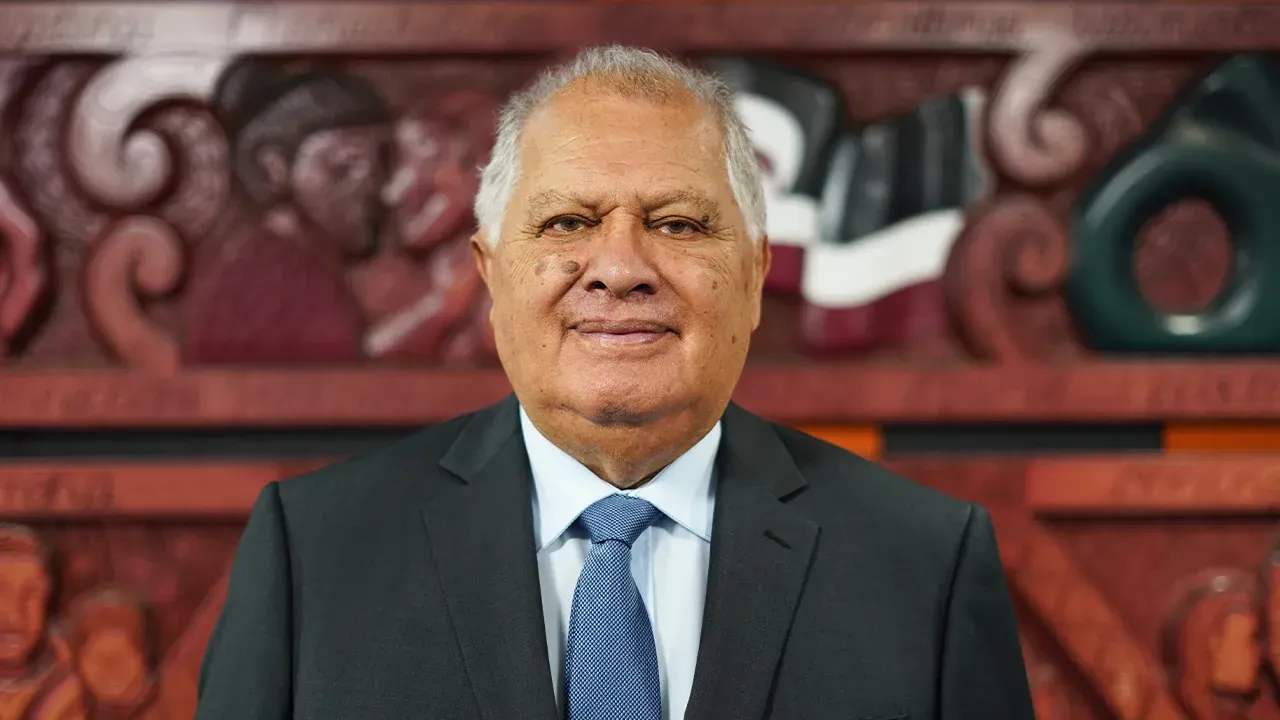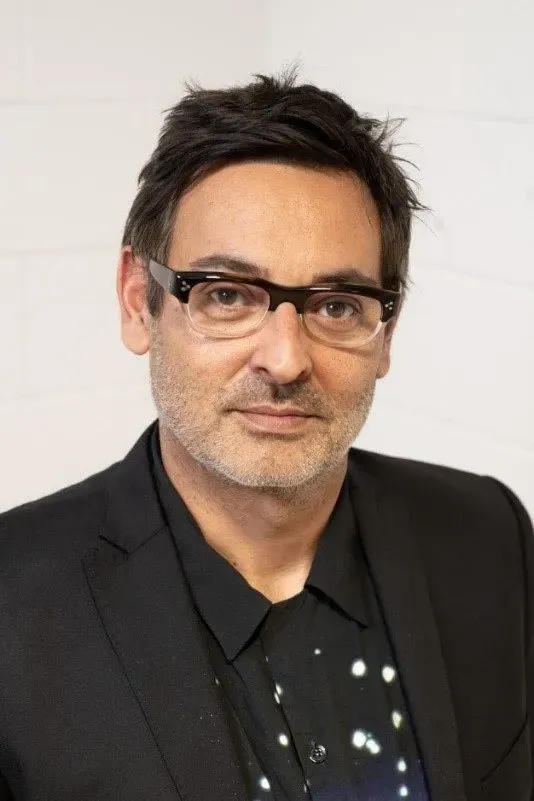New Rules But Creatives "Still In Crisis"
Written by
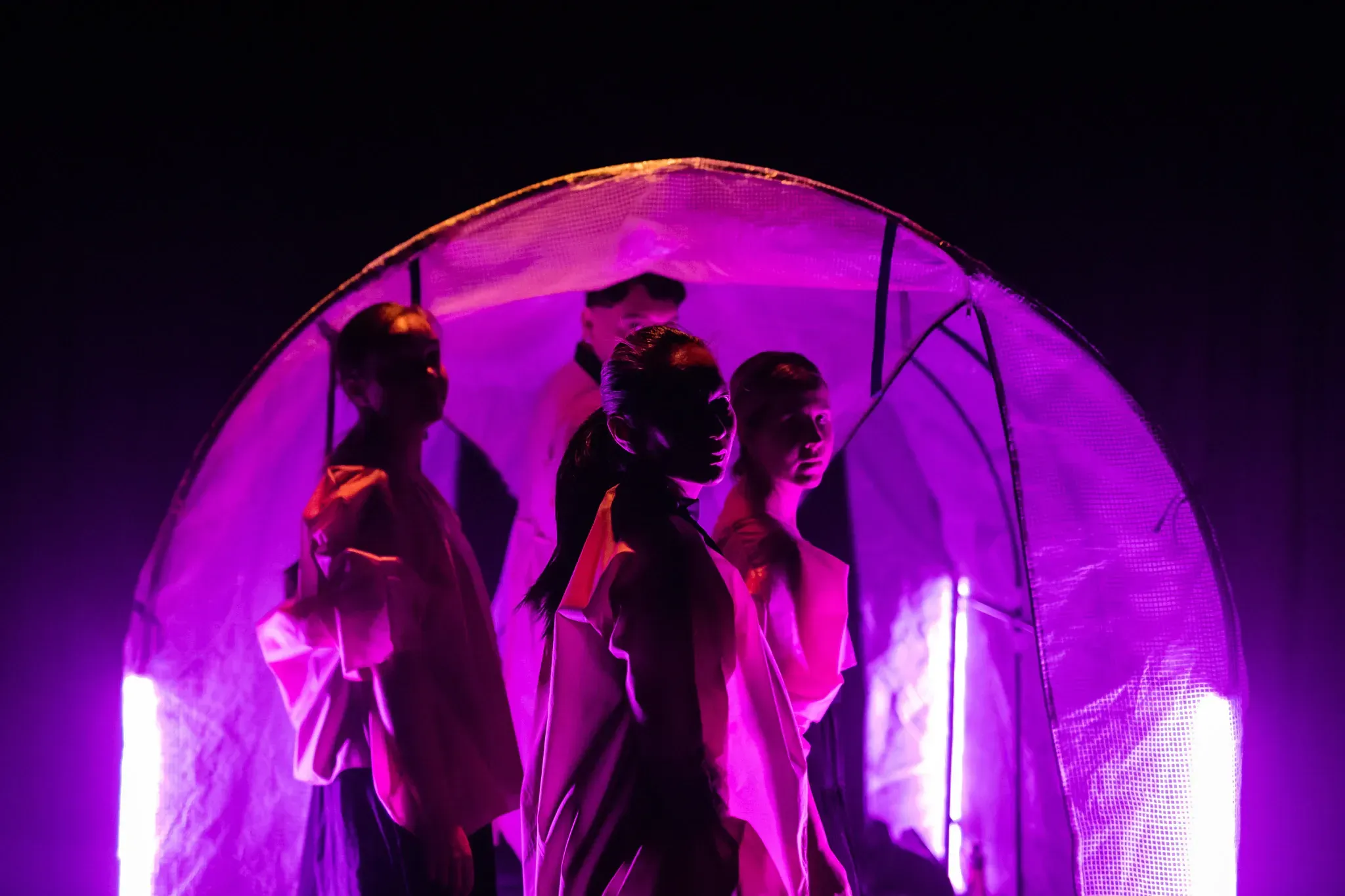
It’s always such an awkward situation.
The nation rejoices, with high fives, fist pumps and a general buzz amid the headlines of change to the Traffic Light settings with impending return of freedoms and the departure of Vaccination Passes and QR scanning. However, there's an overlooked pocket of people still letting it sink in.
There’s still one group in Aotearoa that isn’t yet to be invited to the buffet of opportunity.
A large chunk of the performing arts community remains on rations.
What is on offer may be doubled, with indoor capacity limits lifted from 100 to 200 people under Red Light - nothing to be sniffed at - but in context, few other communities will operate under such restrictions.
The news that outdoor events will have no capacity restrictions from 11.59pm this Friday (25 March) is welcomed but the reality is it’s that time of year where fewer and fewer organisers will be gambling on mother nature, as the massive downpours hitting parts of the country illustrate.
And while all this news sets in - there will be a lot of questions that still need answering. Do the Omicron Relief Support offerings from Manatū Taonga Ministry of Culture and Heritage (MCH) and Inland Revenue (IRD) continue? Some of the conditions of application have revolved around events cancelled under Red Light - do the new rules change that, and what happens when the light turns Orange?
In fairness to said agencies, there are a lot of conversations that will be taking place in the coming days to address these latest complications.
MCH Deputy Chief Executive Joe Fowler has told The Lowdown "Obviously, we are delighted that larger events can get up and running. We are looking forward to seeing audiences getting back to enjoying our amazing cultural offer, and we know how important the bigger crowds and increased income will be for the sector.
"We also appreciate that there will be nerves about how quickly audiences will return, and that event organisers will have to make some tough decisions about the rules they apply to their events; the revised protection framework has as many ‘recommendations’ as ‘requirements’.
"We know that the challenges of the last two years have been exhausting too – and that it is not easy for the sector to simply ‘pick up where it left off’. We have been providing direct support to people and organisations that have not been able to retain important staff or equipment – you can’t just ‘switch everything back on’.
"Given the above, our focus over the coming weeks will be to work with the sector and other Government agencies to make sense of the new arrangements and help the sector work out what the changes mean for them. We will also be looking at our current support schemes and working out whether we need to tailor our support to better suit the challenges the sector faces through the remainder of the ‘Red’ phase and the anticipated move to ‘Orange’."
The Lowdown has canvassed the opinion of those creatives who will still have their livelihoods shackled under the new settings, all while watching other industries throw off the chains.
“Our sector is still very much in crisis and this announcement doesn't change that,” Silo Theatre’s Artistic Director Sophie Roberts told The Lowdown.
“Theatre and live performance has been decimated, we've lost a huge wealth of talent and knowledge with many practitioners being forced to leave the industry.
“I think we are looking at a really long road ahead of us to rebuild what has been lost over the last few years, particularly in the area of having a skilled workforce that can deliver exceptional experiences to audiences.

Sophie Roberts. Photo: Supplied.
“I'm also mindful that a change in the rules doesn't mean the way people feel about going out and gathering right now will also change overnight and that will also take time to rebuild. We're still in the midst of a public health crisis, we're still trying to make decisions that are going to best support our most vulnerable: our contractors, our artists, and our independent workforce while we all try to keep the lights on, all the same issues we have all been facing are still there.
“It's frustrating because while we have heard a lot from those in hospitality and tourism, I think we have been largely left out of the public conversation about the impacts of the pandemic. We will be the last sector to get back up and running post pandemic and I'm not sure many people outside our industry grasp the magnitude of that.
“It's about a lot more than who we can legally fit in the house. For us to even enter recovery mode our sector requires significant, targeted and ongoing support in order for us to rebuild.”
Jonathon Hendry, Chief Executive of Wellington institution BATS Theatre, told The Lowdown he views “the easing of many restrictions is a positive step, especially for mid-sized indoor venues and outdoor events.

Jonathon Hendry. Photo: Supplied.
“The reality for smaller venues with hospitality such as BATS is that under red it remains financially challenging for both ourselves and most importantly, the artists we partner with. The impact of COVID continues to test resilience and it will likely be challenging for some time.
“Yet as we look to the future, there are some honest conversations in play. We must rebuild better from the pre-COVID environment and address issues such as career sustainability, equity and inclusion.”
The evolving restrictions will come with plenty of juggling and reviewing of options for live performers in the weeks and months ahead.
Bach Musica NZ were quick to release an extra 100 tickets for each of their previously sold out three Opera Galas happening this weekend (26 - 28 March) at Auckland’s St-Matthew-in-the-City under the new settings.
The likes of well-established musical act NZTrio just days ago announced their Legacy series as part of their 17 stop 2022 schedule beginning in Christchurch next month.

NZTrio Somi Kim, Ashley Brown and Amalia Hall. Photo: Supplied.
Manager Jessica Duirs told The Lowdown “we’re relieved to see restrictions easing, although like many in the performing arts industry, we were hoping for limits to be linked to venue capacity.
“The 200 limit will continue to impact so many of our industry’s larger events, festivals, the orchestras, ballet and opera. However, we still support measures that keep our most vulnerable people safe, and look forward to further easing when it’s safe to do so.”
Indian Ink Theatre Company are today departing to the United States, taking their show Paradise or the Impermanence of Ice Cream to four of the Hawaiian Islands and Arizona.
Company Director Justin Lewis told The Lowdown “the level change to 200 people indoors really means not much change for the performing arts industry that operates inside.
“A limit of 200 people is not financially viable for our company or many others. Add the need to distance and in many venues we won’t be able to achieve the 200 person limit anyway.
“But in my view, the issue is not so much the Government limits but Omicron itself - the experience of the hospitality industry where restaurants are empty even though they have capacity illustrates that it’s only when people feel safe that our industry will start to recover.

Performance of Indian Ink's Paradise. Photo: Supplied.
“This is supported by intelligence from the US, where we’re about to tour and audiences are down dramatically. A significant percentage of the core audience for theatre will only return when they are sure it’s safe to do so.
“For a sustained recovery, we need the spread of COVID to be dramatically reduced and we need clearly articulated strategies from venues that give audiences confidence that they’re not risking their health for a show.
“Recovery from Omicron is not going to be like when we had elimination and people surged back to live performances; it’s going to be much slower and more uneven.”
Award-winning choreographer and dancer Jessie McCall, currently touring Daybreak Estate, told The Lowdown “whilst it remains difficult to present theatre-based work under COVID restrictions - and we've definitely felt that in our only-partially-successful attempts to keep a multi-center on its feet across this period! - I am deeply relieved that the recent shift hasn't radically opened up protections that are so needed for indoor venues to keep everyone safe.
“It continues to be a perilous time for artists, with some good supports on offer for those who fit certain criteria - and not-good-enough supports for those who don't - but ultimately my position as an artist working in this climate, is that navigating smaller audiences, devastating cancellations and the like is a reality of continuing to make and share work in the middle of a pandemic.

Daybreak Estate, choreographed by Jessie McCall. Photo: Courtney Rogers.
“I am not willing to put lives in danger in order to show my work, and so am relieved that caps on internal events remain in place for now, and can only aim to do the very best I can to cushion the upsetting but inevitable impacts for myself, my collaborators, and creative community.
“It's a tough time, but I don't think throwing health advice to the wind is an acceptable answer to the realities that face us as artists right now.”
In comedy, timing is everything. And timing hasn’t been kind to the NZ International Comedy Festival, forced to cancel this year’s event late last week.
After hearing about the new settings, General Manager Lauren Whitney told The Lowdown “the increase in capacity to 200 for indoor spaces brings some hope that we are working towards being able to have larger audiences in venues again in the future, but with physical distancing many theatre spaces still won’t be able to increase capacity. The larger venues will be able to double their audiences, but most will not be profitable at that capacity.
“For us, the decision came down to the significant disruption to the creative process for artists and challenging environment to be able to create their shows, alongside the massive logistical challenges of safely delivering a Festival of our scale in May with so much uncertainty around Omicron.
“Sadly, it is still not feasible for us to deliver the Comedy Festival, even with the new capacity increases. We are focussing on ways we can continue to support artists and the wider industry, whilst working on how we can bring some moments of joy and laughter to audiences across 2022.”
New Zealand Events Association has remained a strong advocate and source of information for many in the industry. General Manager Ségolène de Fontenay told The Lowdown "we certainly welcome the announcement of today which is a step in the right direction for indoor events.
“Whilst the traffic light setting remains at Red, the next review of this setting is scheduled for 4 April. If/when we move to Orange, outdoor and indoor events will be limitless, however close contact is higher risk for indoor events so organisers of events over 500 people are encouraged to either add extra capacity or provide seating.”
De Fontenay added they’ve received additional information about what defines indoor events from DPMC (Department of the Prime Minister and Cabinet) which they will share shortly via their newsletter and website.
So it’s been made clear here that an increase to 200 doesn’t make things particularly viable.
Auckland Live, a division of the council-run Auckland Unlimited, is the custodian, programmer, producer and developer of a healthy whack of shows and events at some of Tāmaki Makaurau’s biggest and best known performing arts venues – including The Aotea Centre, The Civic, the Auckland Town Hall, the Bruce Mason Centre, and The Cloud at Queens Wharf.

One of the jewels in the performing arts crown, Auckland's Civic. Photo: Supplied.
Auckland Unlimited CEO, Nick Hill told The Lowdown “the red setting of the COVID-19 Protection Framework and the indoor venue audience caps have impacted our ability to utilise these venues, and event viability.
“This in turn has had a major impact on the performing arts industry throughout Aotearoa New Zealand and all those who work in it or are associated with it.
“Given the size of our venues and the scale of our events, the lifting of the audience cap to 200 people will not make a significant difference and we await the news of a move to a Protection Framework setting that has no limit on the number of people who can attend indoor events."
One thing the last few years has shown is that at any moment - the goalposts can be moved at any moment - and the rules can change.
Becks Clarke, Event director at Tauranga-based Glue HQ told The Lowdown that it felt like a weight was lifted off her shoulders when she heard the news.
But it came with an undercurrent of trepidation.
Outdoor events like food and beverage festivals are underestimated staples and sources of income for many musicians and performers and related technical support. Clarke says many fell between the cracks of the support mechanisms being offered by the various Government agencies for either large scale 5000+ events or the arts and culture specific events.
“I’m an eternal optimist - I just think you’ve got to take (the announcement) for what it is - however once bitten, twice shy.
“The more boutique events producers such as myself have been left out in the cold during both the first and second Lockdown. I think events have been consistently left out of the narrative and the press releases, with the talk focussing on tourism and hospitality.
“For the last two years it’s literally felt like I was sitting at my desk, ripping up money and chucking it straight in the bin because we has to keep our operational costs covered and we couldn’t trade - we couldn’t do a thing. An event for 100 people still requires as much due diligence, as much risk management that’s involved with that - you came out essentially doing that as a volunteer and we still have bills to pay and kids to feed.
“We’ll obviously continue to do our absolute utmost when running an event because health and safety is always a top priority, COVID won’t disappear but the rules around what we can and can’t do from today will help us move forward.”
The 50 year plan
Thinking just a little bit longer term here - Auckland as a region focussed on culture and creativity? Sounds promising.
But don’t jump out of your seat - this could be a slow burn. As in over the next 50 years.
Auckland Unlimited has signalled “a strong focus on further developing Auckland as a region of creativity and culture” is one of the nine scenarios presented in a new report released on Wednesday - Reimagining Tāmaki Makaurau Auckland: harnessing the region’s potential.

Image from Reimagining Tāmaki Makaurau Auckland: harnessing the region’s potential report.
Using pre-pandemic metrics (year ended March 2019), the report highlights Auckland’s creative economy already had a GDP of $5.8 billion – five per cent of the region’s Auckland’s total regional GDP – and employed more than 50,000 people. Where that stands now is anyone’s guess.
The report “envisions a future where culture and creativity are integrated into the everyday lives of Aucklanders and explores the changes needed for Auckland to reach its potential as a region of creativity and culture.”
This is not locked and loaded - it’s not a plan or a strategy, rather the start of what report co-author Sir Peter Gluckman calls an intentional provocation - it’s not viable for all nine scenarios proposed to be adopted. The report is looking two generations ahead with its planning and lays out scenarios with a view of Auckland in 2070.
Sir Peter says ““The scenarios represent pragmatic outcomes that could harness the potential of Auckland’s many assets, including those that are under-appreciated and under-leveraged.” The last part of that sentence will resonate with many reading this.
The report describes creativity as “generally a sustainable, environmentally low-impact, weightless trade sector. Creativity and culture is pivotal to our wellbeing and can drive economic transformation as a region.
“Creative industries with a strong presence and significant potential for Auckland include creative technology, the Māori creative economy, convergent creative content, the Pacific creative economy, performing and visual arts and music.
“Examples include Auckland UNESCO City of Music, thriving cultural precincts in the city centre and communities from the north to south celebrating our diverse region, and creative technology attracting international clients from Disney to Netflix.”
So grab a cup of tea and settle in - there will be much for the parties who have received the report findings to absorb before this takes any shape. But time will come for the public to offer their views, so keep your eyes peeled.
Digital drive
On a comparatively much tighter time frame, Creative New Zealand’s desire to dive into the digital world is moving along.
After initially flagging it a few weeks ago, CNZ’s has now opened Registrations of Interest through until 14 April.
Asked for more clarity on what they’re actually looking for and what the interest has been, Belinda Jones, CNZ’s Capability Services and Initiatives Manager told The Lowdown “since we invited Registrations of Interest for this new digital service (on 15 March), we’ve attracted significant interest from potential providers both within New Zealand and overseas.
“We’re looking for a provider who can maximise opportunities associated with digital technologies. They’ll need to see the potential of digital in the arts, be knowledgeable about the arts sector, have the cultural capability and knowledge, and also the business skills and nous to identify opportunities and provide support.
“Among other things, they’ll be expected to commission digital content/art, assist arts organisations and artists to increase, diversify and deepen audiences, include co-leadership by Māori, consistent with our commitment under Te Tiriti o Waitangi for Council and iwi/Māori to work with each other in a strong and enduring relationship, and provide training or skills development in digital engagement.”
Slice of Paradise
The details of what will be seen at New Zealand’s pavilion at the leading Arts exhibition on the planet may be guarded - but the artist behind it certainly is not.
The creative minds behind NZ’s Venice Biennale entry Paradise Camp - artist Yuki Kihara, curator Natalie King and assistant Pasifika curator Ioana Gordon-Smith - fronted an online Live Q&A on Wednesday night (which you can watch back here on Facebook or below on YouTube).
Kihara was open, passionate and charming, discussing a range of topics and motivations including the process of earning the Biennale nod, being a self-taught artist despite her father telling her “there’s no money in it” and breaking down the concept behind Paradise Camp - how visitors will be “taken into a whole other world” once it opens next month.
There’s a great insight into what drives Kihara both in this project and her mahi in general. She speaks of the cultural significance of being fa’afafine, describing how she staged Wellington’s first fa'afafine beauty pageant at a Cook Island nightclub in Courtenay Place in the early 2000s - ”we only had 4 contestants but we packed the house.”
The personable Kihara also explains that while she may be the first New Zealand artist who is Pasifika, Asian and Fa’afafine, she sees herself as swinging the door open for others to come through.
“In my work, I’m very much driven to create work that empowers an audience. I always feel the fa'afafine audience has always been neglected.
“My advice (for younger Pasifika or queer artists) would be to know who your audience is - who is it that you want to empower through what you do? How do you want this audience to benefit from your work? Once you’re clear in that, then everything will fall into place.
“Perseverance and dedication is really important, you’re going to get knocked back nearly all the time but you have to keep persisting because I feel if I can do it, I think anyone can do it.
“Don’t be afraid to fail - failure guides you to where success is."
Fond memories, sad farewells

Russell Kerr. Photo: Auckland Star/Auckland Museum archives.
The creative community has lost two hugely admired flagbearers in the past week.
Russell Kerr, described as the father of Ballet in Aotearoa, passed away yesterday (Wednesday) at 92, leaving behind him a legacy and a list of achievements that will be long admired.
After travelling the world as a dancer from the 1950s, Kerr’s work as a choreographer and administrator for the medium he loved became literally iconic - earning his the esteemed status of being an Arts Foundation Icon back in 2005.
Among his many roles, Kerr was Artistic Director of the New Zealand Ballet for most of the 1960s, Director of the New Zealand Dance Centre and Patron of the International Ballet Academy.
Another who will leave a lasting impression is Sir Wira Gardiner, who left us last week at 78.

Sir Wira Gardiner. Photo: Oranga Tamariki.
Sir Wira’s been remembered for his many influential roles and had a profound impact on several Governments as a determined and unwavering advocate for Māori, including as founding director of the Waitangi Tribunal and the founding chief executive of the Māori Development Ministry.
Culturally, his impact was significant, serving as Chair of Te Papa and both a talented exponent and passionate promoter of kapa haka, with two of his seven published book on the subject.
Among the family grieving his passing is his daughter, acclaimed filmmaker Ainsley Gardiner.
Aotearoa is the richer for both of these great men’s significant contributions.
Tami gets Luck-y

Tami Neilson and Willie Nelson on stage together in Texas. Photo: Instagram/@tamineilsonmusic
Whoever said never met your heroes needs to sit down for a talk and be corrected by Tami Neilson.
Or even just follow her social media feed. If you haven’t, you’re missing out; it’s been the feel good story of the week - maybe year to date!
The hard working and talented Kiwi singer was performing at the Luck Reunion in Texas and got what can only be called the memory of a lifetime. Performing a duet of the ballad she wrote in honour of her father - Beyond The Stars - with the icon himself, Willie Nelson.
It’s the equivalent of being a painter and collaborating with Pablo Picasso. If you’re devoted to the world of country music, Willie Nelson is one of the first names on your wishlist - let alone in Texas.
The emotion is palpable and if you don’t get a smile on your face watching Neilson’s ability to both fangirl and perform as a peer in the same moment - then you might need a nap.
Neilson’s reaction is also enough to give you all the feels. “I will never forget this moment for as long as I live. So much to say, but words are not enough right now. I will try to be more eloquent soon but right now I am still trying to believe this actually happened. Thank you (Willie Nelson and Luck Reunion) for giving this girl a day beyond her wildest dreams.”
She even made sure she left a lasting impression on his wardrobe, bringing him a personally made Cowboy hat from Wellington based Hills Hats, helping support Aotearoa makers in the process (see below).

Just in case anyone doubted it - Neilson is all class, on and off the stage.
Selection success

Congrats to Mixed media artist Cassandra Barnett (above) for being picked as Auckland Council’s 15th Artist in Residence for 2022.
She plans to explore the concept of rāhui using her skills as a poet and a painter - when she picks up the intensive eight week residence in Waitākere later in the year, which she later hopes to turn into a small book.
While announcing the opening of entries for the 2022 National Contemporary Art Award, it’s been revealed that high touted artist and one of the trio driving the increasingly important Equity for Artists group Reuben Paterson will be the judge.

Reuben Paterson. Photo: Jennifer French.
Entries close on 1 June - the $27,000 prize pool is sure to be hotly contested, if last year’s record number of entries is anything to go by.
And the winners are...
Some big awards will be dished out over the coming days - including golden statuettes of expressionless naked men.
The Oscars are revealed on Monday (28 March NZT) and Aotearoa should be sending out plenty of good vibes to the New Zealanders in the running, most of which come from the already award-laden (and locally shot) Western The Power of the Dog.
Dame Jane Campion has three separate chances to walk across stage for her role spearheading the most nominated movie at this year’s Academy Awards.
She’s chasing history as the first woman to win the Best Director award twice, is up for Best Adaptive Screenplay and the overall Best Picture gong.
She’s far from the only Kiwi who will have their best frocks and tuxedos dusted off for their roles in the project - Grant Major and Amber Richards are up for Best Achievement in Production Design, while Richard Flynn is one of the team nominated for Best Sound.
Weta FX are again represented, with New Zealander Sean Walker in the running for the Best Visual Effects award through his work on Marvel’s Shang-Chi and the Legend of Ten Rings.
And tonight (Thursday), the belated 2021 APRA Silver Scrolls will dished out virtually, after being unable to give the event the gathering it deserves.

If you want a refresher on who’s up for the prizes - read The Big Idea’s discussion of the groundbreaking nature of the nominees here with finalists Troy Kingi and Maisey Rika - and get the views of fellow nominees Jonathan Pearce of The Beths and Anthonie Tonnon here.
UPDATE: We have an interview with the winner here on The Big Idea.
